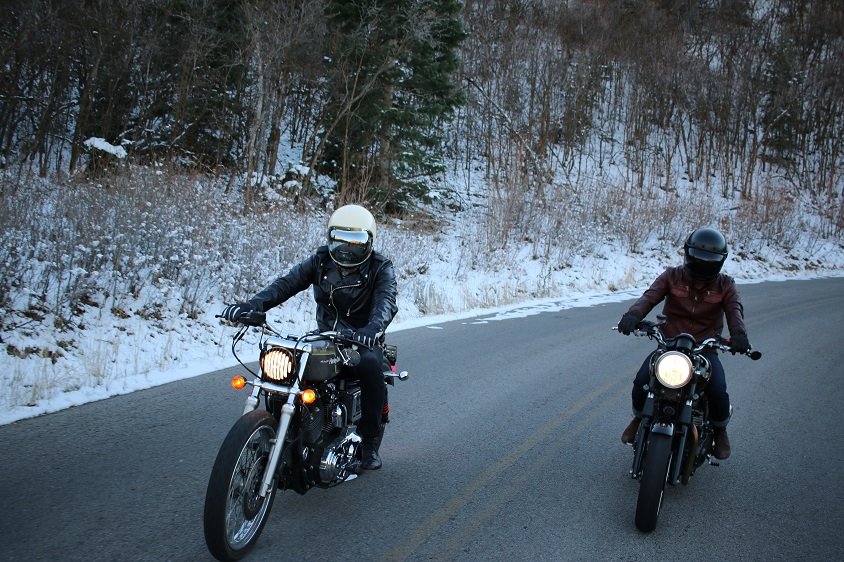Riding a motorcycle is an enjoyable pastime for many Ohioans. Unfortunately, just like driving a car, operating a motorcycle can result in dangerous spills and accidents, especially in the winter.
According to the U.S. Insurance Institute for Highway Safety, the number of motorcycle-related fatalities was 29 times that of auto-related fatalities as of 2015. In 2016, Ohio had more than 200 motorcycle related fatalities. Fortunately, by following some basic safety tips, you can reduce your risk of getting injured while riding a motorcycle.
1. Slow down
This may fall into the “duh” category of motorcycling tips, but bikers are typically in a hurry; that’s part of the fun. In cold weather, be extra-easy with the accelerator and try extra-hard to refrain from sudden anything – braking, acceleration, cornering, swerving. Remember it’s easy to go fast – all you have to do is spin the accelerator. A great biker can slow down to almost a standstill and still control the machine, and the slow-and-steady skills you learn while driving in the winter will be handy when it’s spring and summer.
2. Remember cold weather = cold tires = less traction = (see tip#1)
Let’s assume your tires are in great working order. (Quit reading now if your tires are bald or decrepit, and go buy new ones.) Your tires, under normal conditions, heat up from use after you ride a bit, resulting in tighter traction and enabling you to control the machine like a champ. In freezing weather, you can safely assume any tire heat gathered from your trip is gone after as much as a 60-second stop, and you’re starting from scratch. Check your pressure in cold weather more often in winter, too, and use a gauge, not your eyes.
3. If it starts to snow, hang it up.
Freezing cold weather, wind and even ice can be dealt with by beginners or near-beginners. But when a snowstorm happens, your visibility is typically reduced to garbage and you can either tough it home going 4 miles an hour and trying to avoid black ice, inept auto drivers, sharp curves and the like, or you can find the nearest mall or similar shelter and wait it out.
4. Wear Proper Clothing
Many people underestimate the importance of wearing appropriate clothing when riding a motorcycle. Despite what the weather may be outdoors, it’s important to protect your body with protective clothing. A simple motorcycle spill can result in serious injuries if you aren’t adequately dressed.
Experts recommend you wear long pants, a long-sleeved shirt or jacket, shoes and socks. Reinforced or leather clothing and boots will give you even more protection. Even if your state doesn’t require it, always wear a DOT-approved helmet. If you are using an open-faced helmet, be sure to wear goggles.
In Ohio, you do not have to legally wear a motorcycle helmet if you’re over the age of 21, as long as you carry $10,000 of Medical Payment Insurance
5. Remember Bike Maintenance
The time to have repairs and work done on your bike is before you take it out for a ride rather than after you discover something is wrong. Even if your bike worked properly last fall, issues may have developed while it was sitting all winter.
If you’re not mechanically inclined, haul your bike to your local motorcycle repair shop and have them check it out prior to riding it for the first time. Some motorcycle shops will even pick up and return your bike for a fee.
If you’re familiar with the basics, you can check it out yourself. The main things you want to inspect are lights, mirrors and tires, but it’s also important to make sure the bike has regular maintenance, including suspension and chain adjustments, oil changes, tire pressure and any needed brake work.
6. Pay Attention
As important as it is to pay attention to the road and other drivers while driving a car, it’s even more important when driving a motorcycle. Because of their small size, it’s often difficult for drivers to see a motorcycle – particularly when the biker is in the driver’s blind spot. Consider this when maneuvering in and around other vehicles.
Additionally, don’t try to get into a spot with your motorcycle that you wouldn’t go with your car. As helpful as your mirrors may be, you can’t always see everything that’s around you. Get in the habit of turning your head and looking around on all sides. It’s always better to be safe than sorry. Always be courteous to other drivers.
7. Know the Law
Although motorcycle driving tests may be slightly different from automobile driving tests, the laws are the same for all drivers. Make sure you’re familiar with old laws, current laws and any new laws that may have recently come into effect.
If you or someone you know has been injured in a motorcycle accident, the attorneys at Wright & Schulte are ready to help. Contact us today for a free consultation and see what we can do for you.



